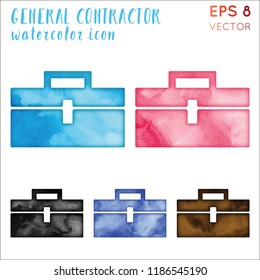Discover The Influence Of Weather On Your Outside Painting Task For A Perfect Coating
Discover The Influence Of Weather On Your Outside Painting Task For A Perfect Coating
Blog Article
Write-Up Composed By-Greenwood Thuesen
Recognizing exactly how climate condition can influence the result of an outside paint undertaking is critical for accomplishing a remarkable finish. From temperature level fluctuations changing paint adhesion to moisture degrees affecting drying times, each component of weather plays a substantial role in the success of your project. In addition, wind rate and precipitation can introduce unanticipated difficulties that may endanger the high quality of the final result. As we browse with the subtleties of weather's effect on external paint, it ends up being evident that careful planning and calculated timing are important for making certain an expert and resilient end result.
Suitable Temperature Array for Paint
When considering exterior paint tasks, the ideal temperature level variety plays a critical duty in accomplishing ideal results. Painting in the appropriate temperature level conditions guarantees that the paint sticks correctly to the surface, dries out equally, and cures properly. Generally, the advised temperature array for outside painting is in between 50 to 85 levels Fahrenheit.
Paint in temperature levels below 50 degrees Fahrenheit can result in concerns such as bad paint bond, long term drying out times, and a boosted likelihood of splitting or peeling off.
On the other hand, paint in temperature levels over 85 levels Fahrenheit can trigger the paint to completely dry too rapidly, resulting in blistering, gurgling, and an unequal coating.
To attain the most effective outcomes, it is vital to examine the weather prediction prior to starting an exterior painting project. Ideally, goal to paint throughout light weather with modest temperature levels and reduced moisture degrees.
Impacts of Moisture on Paint Drying
Moisture levels dramatically influence the drying out process of paint put on exterior surface areas. High humidity can extend the drying out time of paint, resulting in potential problems such as trickling, streaking, and even the formation of bubbles on the painted surface area. Excess moisture in the air reduces the evaporation of water from the paint, hindering the treating process. https://www.coatingsworld.com/contents/view_online-exclusives/2021-09-15/15-home-painting-statistics-savvy-painters-need-to-know/ is particularly bothersome for water-based paints, as they rely on evaporation for drying.
On the other hand, low moisture degrees can likewise impact paint drying. visit the up coming document may create the paint to dry as well quickly, bring about bad attachment and a harsh coating. In such instances, including a paint conditioner or splashing a fine mist of water airborne can assist manage moisture levels and boost the painting outcome.
To ensure optimal drying problems, it is suggested to repaint when the humidity degrees vary between 40% and 50%.
Surveillance moisture degrees and taking proper procedures can aid attain a smooth and sturdy paint finish on exterior surfaces.
Wind and Rainfall Factors To Consider
Wind speed and rainfall are crucial factors that considerably influence the success of an exterior paint job.
When it comes to wind, both speed and direction are essential factors to consider. High wind speeds can trigger paint to dry also quickly, causing a substandard finish with prospective issues like splitting or uneven structure. Furthermore, wind can carry debris that might stick to the wet paint, causing flaws. For that reason, painters ought to aim to work on days with light to moderate winds for optimal painting problems.
On the other hand, rainfall, whether rainfall or snow, can be extremely destructive to the outcome of an outside paint task. Dampness from rainfall can prevent paint attachment, triggering peeling off and bubbling over time. It is vital to avoid paint during rainy or snowy weather condition to ensure the longevity and top quality of the paint task. Painters need to additionally enable enough time for the surface area to dry completely after any kind of rainfall prior to beginning or resuming the painting process.
Verdict
Finally, climate condition play a considerable role in the end result of an external painting project. The excellent temperature level variety, moisture levels, wind rate, and rainfall all contribute to the success or failure of the paint work.
It is vital to consider these variables and plan accordingly to make certain correct paint bond, drying times, and general quality of the completed product.
